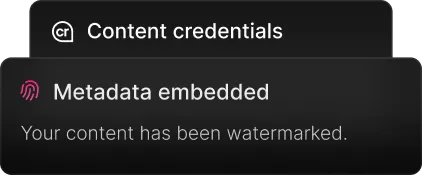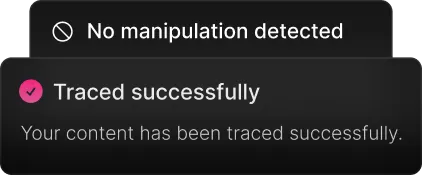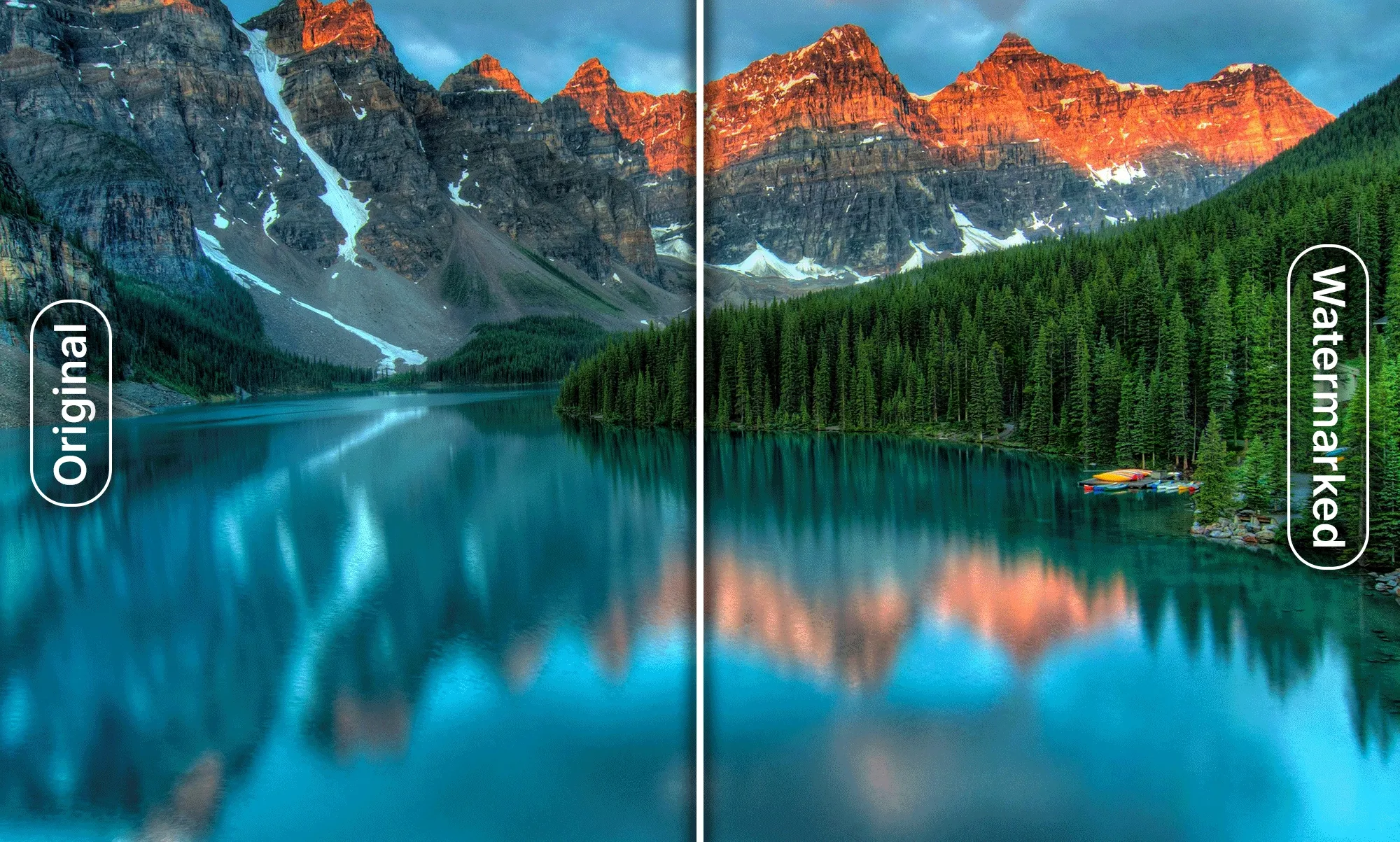Stop content leaks.
Defend your IP.
Content leaks cause can cost millions of dollars in revenue and recovery time. Steg.AI's watermarks helps marketing and security teams protect content throughout its lifecycle.
Contact SalesStop Content Leaks From Becoming Losses
Leaks cost an average of $10 million per incident due to lost sales, diminished launch momentum, and recovery efforts. When a leak happens, Steg.AI lets you respond immediately.
Trace Leaks in Seconds
Apply invisible forensic watermarks to identify exactly where leaked content came from.
Reduce Cost of Leaks
Shorten investigations and limit exposure by pinpointing the source of leaks fast.
Maintain Launch Momentum
Prevent premature disclosures from derailing product launches and campaigns.
Protect Your Brand
Deter unauthorized sharing by making every copy of your content traceable.
How It Works

Integration
Steg.AI's different form factors can integrate into any content workflow with our WebApp, API, SDK, and other on-prem deployment options.

Watermark
A unique imperceptible watermark is applied at each step of the content lifecycle from inception to release as it is shared with internal and external teams.

Trace
In the event of a leak, the watermark is read from the leaked outlet and traced back to the source, providing information on when and where it was shared.
Content Leak Protection for High-Value Digital Assets
The financial and reputational stakes of unaothorized content exposure is high. Companies lose tens of billions of dollars each year to leaks, piracy, counterfeit goods, and stolen intellectual property. These incidents derail product launches, erode customer trust, and force organizations into costly crisis management. A single leak can trigger multi-million-dollar losses—such as the Arcane Season 2 incident, which cost Netflix millions in recovery and staff hours.
Most organizations already invest in encryption, access controls, and Data Loss Prevention tools. But these systems have a fundamental gap: they attempt to stop leaks, yet offer little visibility when a leak inevitably occurs. True Content Leak Protection requires the ability to attribute, trace, and understand leaks, not just block them. Without that visibility, security teams are left guessing which team, partner, or internal workflow compromised the asset.
Steg.AI closes that gap. Our watermarking software provides a layer of forensic visibility that works even after content leaves secure systems. By embedding invisible, durable, and unique identifiers inside images, videos, and documents, Steg.AI enables organizations to trace exactly which copy of an asset leaked, when it leaked, and who leaked it. This turns uncontrolled distribution into a transparent, attributable workflow, something traditional DLP cannot achieve in its own.
Steg.AI can integrate directly with Digital Asset Management systems and, allowing teams to share files normally while automatically generating uniquely watermarked versions for each recipient. This ensures frictionless collaboration while providing continuous Content Leak Protection across the full asset lifecycle.
Invisible Watermarking Built for Content Leak Protection

Steg.AI’s invisible watermarks are created using proprietary deep learning models that modify the underlying pixels in a way that is imperceptible to humans but reliably detectable by our systems. These unique identifiers encode contextual metadata such as the team involved, the meeting where an asset was shared, or the external partner receiving it—making every shared version traceable.
Unlike metadata tags, which can be stripped instantly, Steg.AI’s invisible watermarks remain intact even after cropping, resizing, re-encoding, screenshotting, color shifts, or other edits. This persistence is essential for real-world Content Leak Protection, where leaked content almost never appears in its original file format.
To learn more about how Steg.AI’s watermarking works, visit our digital watermarking page.
How Organizations Use Steg.AI for Content Leak Protection
Steg.AI is now used across industries—including entertainment, gaming, publishing, toy manufacturing, consumer electronics, fashion, and automotive to trace and prevent costly leaks. The workflow is simple: every time an asset is shared, Steg.AI generates a version watermarked with a unique identifier tied to the user. These versions look visually identical, but each carries its own forensic fingerprint.
If a leak occurs, like a pre-release trailer appears on social media, a confidential design mockup surfaces on a competitor’s site, or an internal slide deck reaches the press, Steg.AI can analyze the leaked file and determine exactly which version it is. Organizations gain immediate clarity on the source, enabling them to respond quickly and prevent further exposure.
This visibility transforms how organizations manage risk. Instead of reacting blindly to leaks, teams finally gain the ability to attribute incidents, enforce accountability, and strengthen security controls based on real evidence.
FAQs
Have a different question and can’t find the answer you’re looking for? Reach out to us and we'll get back to you as soon as we can.
Contact Us
